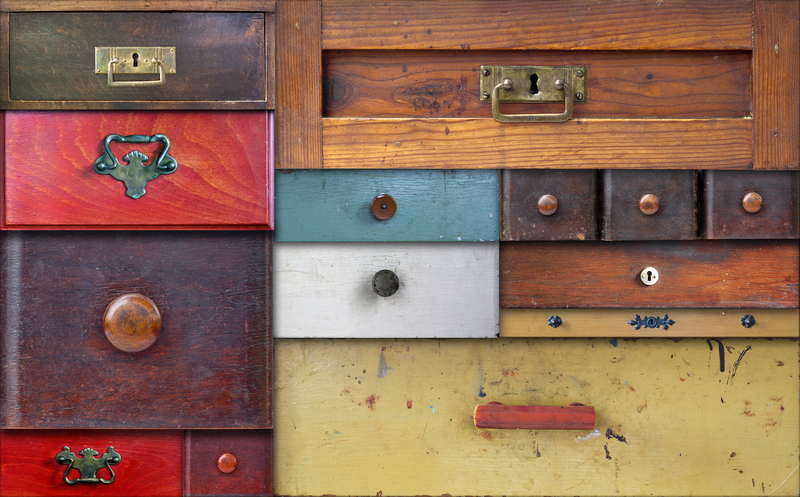How to Tackle Bulky Waste Items Without Overspending
Dealing with bulky waste items can be a serious headache for households and businesses alike. Whether it's old furniture, worn-out appliances, or yard debris, oversized refuse poses logistical, environmental, and financial challenges. If you're struggling with how to get rid of large waste items without blowing your budget, you're in the right place.
In this comprehensive guide, you'll discover practical, cost-effective strategies to dispose of bulky items responsibly and efficiently. We'll also dive into tips for saving money, eco-friendly disposal options, and ways to avoid common mistakes when clearing out large-scale junk.
What Qualifies as Bulky Waste?
Before tackling your disposal problem, it's important to identify what counts as bulky waste. Typically, these are oversized items too large to fit in standard waste bins or be collected with regular household garbage. Common examples of large waste items include:
- Furniture: sofas, armchairs, beds, mattresses, wardrobes, desks, and bookcases
- Appliances: refrigerators, ovens, washing machines, dryers, freezers, air conditioners
- Electronics: televisions, large screens, computers, printers, microwaves
- Yard Waste: tree branches, logs, shrubs, large bags of clippings
- Construction debris: doors, windows, tiles, concrete blocks, bathtubs
- Miscellaneous: bicycles, exercise equipment, large toys, carpets, and rugs
Knowing the type of item you need to dispose of helps you choose the most efficient and affordable removal solution.

Why Does Bulky Waste Cost More to Remove?
Disposing of large waste items often comes with extra charges. But why is bulky waste disposal more expensive than regular trash collection?
- Size and Volume: Large items require more space on waste trucks, reducing how much can be collected per trip.
- Weight: Heavier items may exceed standard landfill limits and incur surcharges.
- Handling: Bulky objects frequently require special equipment and extra labor to move safely.
- Recycling Regulations: Some appliances and electronics demand special processing to recover hazardous materials.
- Waste Management Policies: Municipal services may only allow a set number of bulky pickups per year, with fees for extra collections.
Understanding these factors can help you find ways to keep costs low when removing large refuse from your property.
How to Save Money on Bulky Waste Disposal
Let's explore actionable strategies to get rid of your bulky items economically:
1. Plan Ahead and Avoid Rush Fees
Organizing your disposal in advance is always cheaper than last-minute removals. Many municipalities require a booking for large item pickups, and some private junk haulers charge extra for urgent requests. By grouping your items and scheduling early, you can avoid costly penalties.
2. Use Free Municipal Pick-Up Services
Check if your local council or public service offers free or subsidized bulky waste collection. Many cities allow households one or more annual collections at no charge. You typically need to reserve a spot and place the items at curbside on the designated pickup day.
- Contact your city's solid waste department or visit their website
- Know the allowable volume and permitted items
- Follow guidelines for disassembly and placement
- *Avoid fines by checking for restrictions, such as electronics or hazardous waste*
3. Donate Items in Good Condition
Giving away usable bulky waste not only helps others, it saves disposal costs and is more environmentally friendly. Many charities, shelters, and thrift stores accept donations of working appliances, gently used furniture, and durable goods. Some even offer free pickup for large items!
- Research local charities or online donation platforms
- Clean and repair items if needed
- Get confirmation of what's accepted (e.g. mattresses are often refused)
4. Sell or Give Away Items Online
Declutter and make money from your bulky waste by selling items on classified sites, social media marketplaces, or neighborhood groups. Even if items aren't in top shape, you may find someone willing to haul them for parts or refurbishing. Sites like Craigslist, Facebook Marketplace, Freecycle, and Nextdoor can connect you to local takers.
- List clearly with photos and detailed descriptions
- Mention 'buyer collects' or 'curbside pick-up' to avoid transport fees
- Be realistic on price if you want quick removal
5. Recycle Or Repurpose Bulky Objects
Don't overlook creative reuse and recycling as budget-friendly bulky waste solutions:
- Break down wooden furniture for firewood or DIY projects
- Strip metal from appliances and sell as scrap
- Use old shelves and wood as garden planters
- Take electronics to e-waste recyclers for responsible disposal
Many recycling centers accept certain kinds of bulky refuse for free or a low fee, making it cheaper and more sustainable than landfilling.
6. Pool With Neighbors to Split Costs
If you and your neighbors are all facing large cleanouts, save by booking a collective junk removal service or hiring a skip/bin together. This way, the cost of renting a dumpster or truck is shared, reducing costs for everyone.
7. Rent a Truck or Trailer for DIY Hauling
For those with multiple bulky items and access to a vehicle, DIY disposal can be the most affordable option. Renting a truck or borrowing a trailer from a friend lets you take your refuse to the nearest landfill or recycling center directly.
- Check landfill tipping fees and regulations beforehand
- Sort loads to maximize recycling and minimize weight-based charges
- Enlist help for lifting heavy items safely
Smart Tips for Reducing Bulky Waste in the Future
Avoiding the buildup of oversized trash is the best way to control costs and protect the environment. Here's how you can minimize the need for large-item disposal:
Buy Only What You Need
Think twice before purchasing large items, especially impulse buys. Choose multi-functional or modular furniture that can adapt to new uses as your needs change.
Choose Quality Over Quantity
Investing in durable, repairable products reduces how often you need to dispose of bulky goods. Look for well-made pieces with replaceable parts and long warranties.
Repair and Refurbish
Broken doesn't mean the end. Many large items--especially furniture and appliances--can be repaired or upgraded at a fraction of the replacement cost.
Swap or Loan Instead of Buying New
Join local swap groups for temporary needs (like baby gear or office equipment) rather than buying new and having to eventually dispose of them.
Common Mistakes to Avoid When Disposing Bulky Items
Don't let poor planning or lack of information lead to overspending! Here are frequent errors people make when getting rid of large waste and how to avoid unnecessary costs:
- Dumping illegally: Abandoning items on the curb, in alleys, or in empty lots can result in hefty fines and environmental harm.
- Not measuring: Failing to measure your items (and entryways) often leads to failed pickups or extra labor charges.
- Skipping donation or recycling: Many things headed for landfill could be donated, upcycled, or recycled, saving money and resources.
- Poor communication: Neglecting to confirm with your service provider about what they will or won't take could leave you stuck with items and paying extra for repeat service.
How to Compare Bulky Item Removal Services
There are many bulky waste disposal companies out there. Here's how to choose the right one and avoid surprise charges:
- Read online reviews and ask for recommendations
- Request quotes from at least three providers
- Clarify what's included: labor, transport, disposal fees
- Check licensing, insurance, and eco-friendly disposal credentials
- Ask about donation or recycling options before booking
If you have a lot of items or unusual waste (like exercise equipment, hot tubs, pianos, etc.), be sure to get confirmation of acceptance and an upfront price.

Frequently Asked Questions About Bulky Waste on a Budget
Q: What's the cheapest way to get rid of a sofa or couch?
A: First, check with local charities or marketplaces for donation or sale. If that fails, look for free municipal pickup or a local recycling center that accepts furniture. DIY hauling to landfill is usually cheapest if you have the means.
Q: Can I leave my old mattress on the curb?
A: Never leave mattresses out without permission; many cities treat this as illegal dumping. Schedule a special curbside pickup or arrange a charity/recycler drop-off.
Q: Do junk removal companies recycle or donate?
Many reputable companies partner with recyclers and charities. Always ask providers about their sustainability policies.
Q: How can I prepare items for pick-up to save money?
Disassemble whenever possible, keep items dry, and put them in an accessible location to avoid extra handling charges.
Conclusion: Responsible Bulky Waste Disposal Doesn't Have to Be Expensive
Handling bulky waste items affordably is possible with a mix of smart planning, community resources, creative reuse, and a little elbow grease. Whether you're dealing with a single appliance or clearing out a cluttered basement, always consider donation, recycling, and DIY options before resorting to expensive disposal services.
*Summary of top savings tips:*
- Research free or subsidized municipal bulky waste collections
- Donate or sell usable items to avoid landfill fees
- Group waste with neighbors to split removal costs
- Prepare items in advance and avoid rush fees
- Explore recycling and creative repurposing solutions
By following these strategies, you'll save money and reduce your environmental impact every time you tackle those big, awkward junk removal jobs!
*For more advice on getting rid of large waste items affordably, contact your local waste management authority or consult with a professional junk removal service today.*
